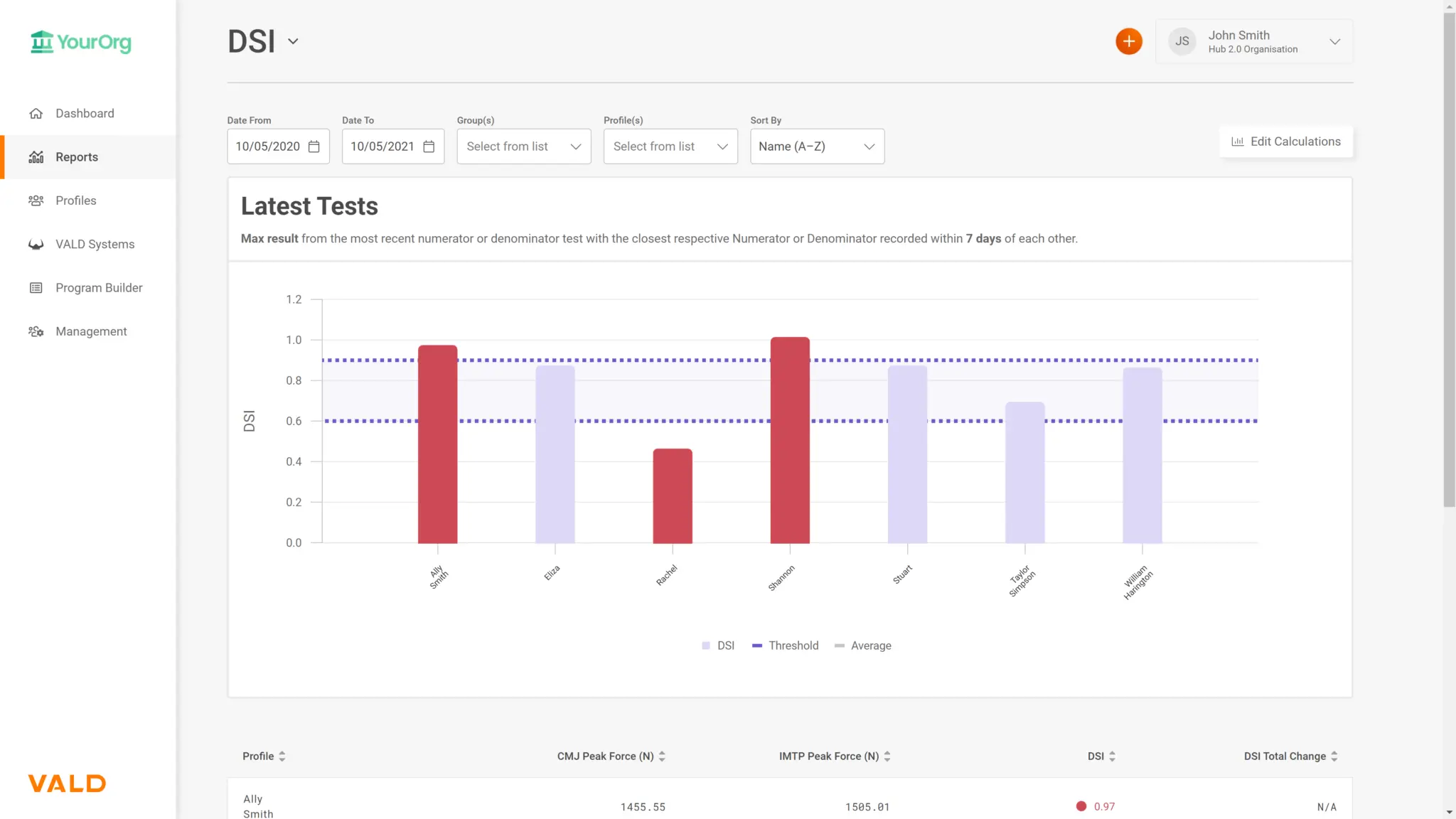RESEARCH SUMMARY: What is the Dynamic Strength Index?
Available in:
EN
The concept of profiling the dynamic force capabilities of athletes in relation to their absolute isometric force capabilities is not necessarily new (Sheppard et al., 2011). However with the increased popularity of portable force platforms recently this is being more frequently calculated. Information on the force production characteristics of an athlete can be measured using two performance tests commonly used within testing batteries (Suchomel et al., 2020):
- Countermovement jump (CMJ) for eccentric and concentric force; and,
- Isometric mid-thigh pull (IMTP) for isometric force.
Although the CMJ and IMTP are the most commonly used performance tests for DSI, an array of alternative tests can be used in its place but one must be ballistic (i.e. have a concentric phase – e.g. Squat Jump, Abalakov Jump) and one must be isometric (i.e. Isometric Squat). These performance tests can be used to calculate the Dynamic Strength Index (DSI), which has also been referred to as the Dynamic Strength Deficit, as a ratio between an individual’s maximal isometric (i.e. IMTP) and ballistic (i.e. CMJ) strength capacity.
Practitioners have attempted to increase the diagnostic value of data obtained from these tests through combining test results to form a composite score or in this case an index (Suchomel et al., 2020).
Calculating a DSI allows a practitioner to:
a) Determine the maximal amount of force an athlete can produce.
b) How much of that total force they can produce ballistically.
This index can then be used to aid in training program prescription, as the DSI may provide insight on an athlete’s strengths and weaknesses in force production.
There is a previously suggested framework for interpreting DSI results, and subsequently applying it to an athlete’s training program (Suchomel et al. 2020). Typically, an athlete with a lower DSI value may benefit from additional ballistic training since they are only able to produce 60% of their maximal isometric force during a dynamic movement such as a CMJ. Whereas an athlete with a higher DSI score may benefit from increasing their ceiling of maximal strength as they are able to produce close to their maximal isometric force during a jump. Some guidelines which have been adopted from Sheppard et al., (2011) and since reapplied (Tavares, 2016; Suchomel et al., 2020) are as follows;
| DSI Score | Training Recommendation |
| < 0.60 | Ballistic Strength Training |
| 0.60 – 0.80 | Concurrent Strength Training |
| > 0.80 | Maximal Strength Training |
A recent addition to VALD Hub allows DSI to be calculated for your athletes based on your chosen criteria. For more information refer to the VALD support site.
See the VALD Hub DSI Report to view the latest results for your team.

Log in to VALD Hub below.
References
Sheppard, JM., Chapman, D., & Taylor, KL. (2011). An evaluation of a strength qualities assessment method for the lower body. J Aust Strength Cond, 19, 4–10.
Suchomel, TJ., Sole, CJ., Bellon, CR., & Stone, MH. (2020). Dynamic Strength Index: Relationships with common performance variables and contextualization of training recommendations. J Hum Kinet, 74, 59–70.
Tavares, F. (2016, Oct 30). “Dynamic Strength Index”. Science for Sport. https://www.scienceforsport.com/dynamic-strength-index/#toggle-id-1
